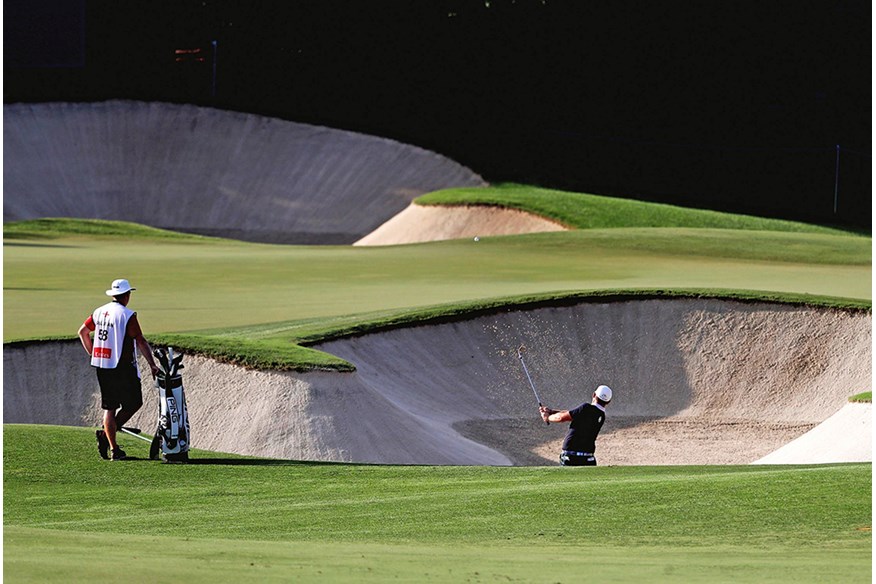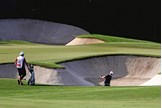Sulli’s guide to better sand play
Last updated:
We all know golf is about 90% mental, so it amazes me how many amateurs walk into a bunker looking absolutely terrified and wonder why they can’t get out. A lot of bunker success comes down to confidence and going in there with a positive, rather than defeatist, attitude. Follow my advice and you’ll soon start to think like a pro, and hopefully play like one, too.
If you’ve got a good lie, raise your ambition. Don’t go into the bunker with the mindset of just getting it out. Be specific. My first thought is always ‘can I hole this?’ I’ll then pick a spot where I want the ball to land and use the contours on the green to get it close.
Most amateurs make the mistake of taking too much sand, when actually you only need to hit an inch-and-a-half or two inches behind the ball. When I practise my bunker shots, I draw a line in the sand and make sure the club enters the sand at that exact point. It’s all about being consistent. If you keep changing the strike point, the amount of roll and spin will vary dramatically and your distance control will suffer.
Let the club do the work for you. Don’t try to help the ball into the air by putting all your weight on your back foot. My weight is usually distributed 70/30 on the left side. By putting your weight on your front foot, it naturally creates more hinge in your wrists… and that makes it easier to apply loft to the ball and get it up and out.
I always make sure the ball is in line with my left heel, and my backside is as low as possible. The key is to create a stable base. Another good trick is to shuffle your feet into the sand. It’s a good way to gauge how much sand is in there and whether you can be aggressive or not.
If you are in a plugged lie, the first priority should be to get it out. Don’t even think about getting too cute with it. Sometimes you’ve got to accept your medicine. Just focus on hitting it as hard as you can, two inches behind the ball, with a square face. The ball will naturally come out lower, so I always take a 60º wedge to ensure I have enough loft to clear the lip.

Different conditions affect the ball flight, so don’t forget to take into account the lie and whether the ball is on an upslope or downslope. As a rule, if the ball is on a downslope, use more loft because it always tends to come out more powerfully.
A lot of people approach a longer bunker shot and try to hit harder. But if you start changing your tempo or the entry point, you are literally playing a guessing game that removes any kind of feel or instinct. If you hit a 60º wedge 20 yards with a nice and easy swing, just do the same thing from 30 yards with a sand wedge.
Keep your action compact. If you watch any pro out of the bunker, their hands will barely get to shoulder height. You get far more control from shortening your swing because you actually feel like you can commit and hit harder through the ball.
You need to loosen up to make a smooth swing. It’s easy to tense up if you’ve got to play a delicate shot, but if you start gripping the club as tightly as you can, you’ll take all the feel out of the shot. It’s like trying to paint a picture; if you try to strangle the paint brush, the paint will go everywhere. Another great analogy is to imagine that the grip is a tube of toothpaste. If you can grip it without bending the tube, fantastic!
My advice is to just experiment and find what works for you. The classic set-up position is to keep the face open so the ball comes out higher, softer and with a little bit of spin. But Jose Maria Olazabal is a fantastic bunker player and he plays everything with a closed face. It’s a unique way of doing it, but any bunker shot relies a lot on feel and it all comes down to personal preference


